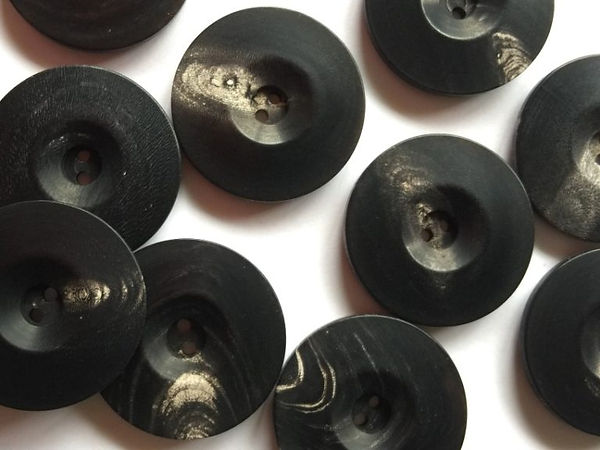Buttons
Here are some articles about buttons that you might find useful. I'll post more as I have time.

Basic comments on age:
Buttons have been made for the past 4000 years at a minimum - Indus Valley Civilization is credited for the first ones. In British Columbia, buttons (esp. mother-of-pearl, or shell because of their reflective qualities) were a valued trade item for decorating blankets, clothing, etc.
Buttons have been made of basically any material that would work: bone, most metals, wood, shell, horn, glass, ceramic, bakelite, celluloid, lucite, vegetable ivory (from palm tree nuts), etc. If you find a button at a BC site, if it is ceramic, glass, shell, horn, or bone, it could pre-1846 and should be collected. If it is bakelite or plastic or vulcanized rubber, it will date later. Prosser buttons - made of porcelain with a smooth top and an orange-peel bottom post-date 1840 but should be collected - but be careful, plastic buttons were often made to look like natural materials and you may confuse a shell button for plastic. Jet (shiny black coal, basically) became popular after 1851. Earlier buttons will be less refined than the older ones. In BC before 1846, we should expect to see numerous shell (also called 'Pearl') buttons as they were trade items, and very simple buttons made of cheap materials from sailor's uniforms, clothes, or trade.

Modern horn buttons - were made in large numbers in late 18th and early 19th centuries and are still made today. Made in presses.
Modern Bone Buttons - they can look very much like plastic and depending on preservation, could still look that way. Also made for a long time in presses especially in Sheffield, England.
This table of button shapes is from the Sebastopol Report that you can find under "Research and Writing. Sebastopol was built in the 1850s and was used well into the 20th century. I'm posting it as a resource if people are interested. There are two other articles below it, but the PDF viewer might make it hard to get to them. Sorry about that - if you are on a computer, you can scroll at the edge - I don't know about other platforms. I'll post other button articles as I have time and space allows.
The U.S. Patent office suffered a fire in 1836. Because of this, few patents survived from before that time. There is a webpage (link) that has some button and clothing patents - they end with X. some are shown here.
Patents
Prosser's patent for porcelain buttons
Old articles about buttons
Reasons humbly offered by the taylors, button-sellers, button-makers, throwsters, twisters, dyers, spinners and winders, &c. for explaining and amending an act made the eighth of Her late Majesty, entituled, An act for employing the manufacturers, by encouraging the consumption of raw-silk and mohair-yarn
Date: [1718]
Publisher: n.p. ([London])
from Gale Primary Resources through the Alberta Library Consortium

















